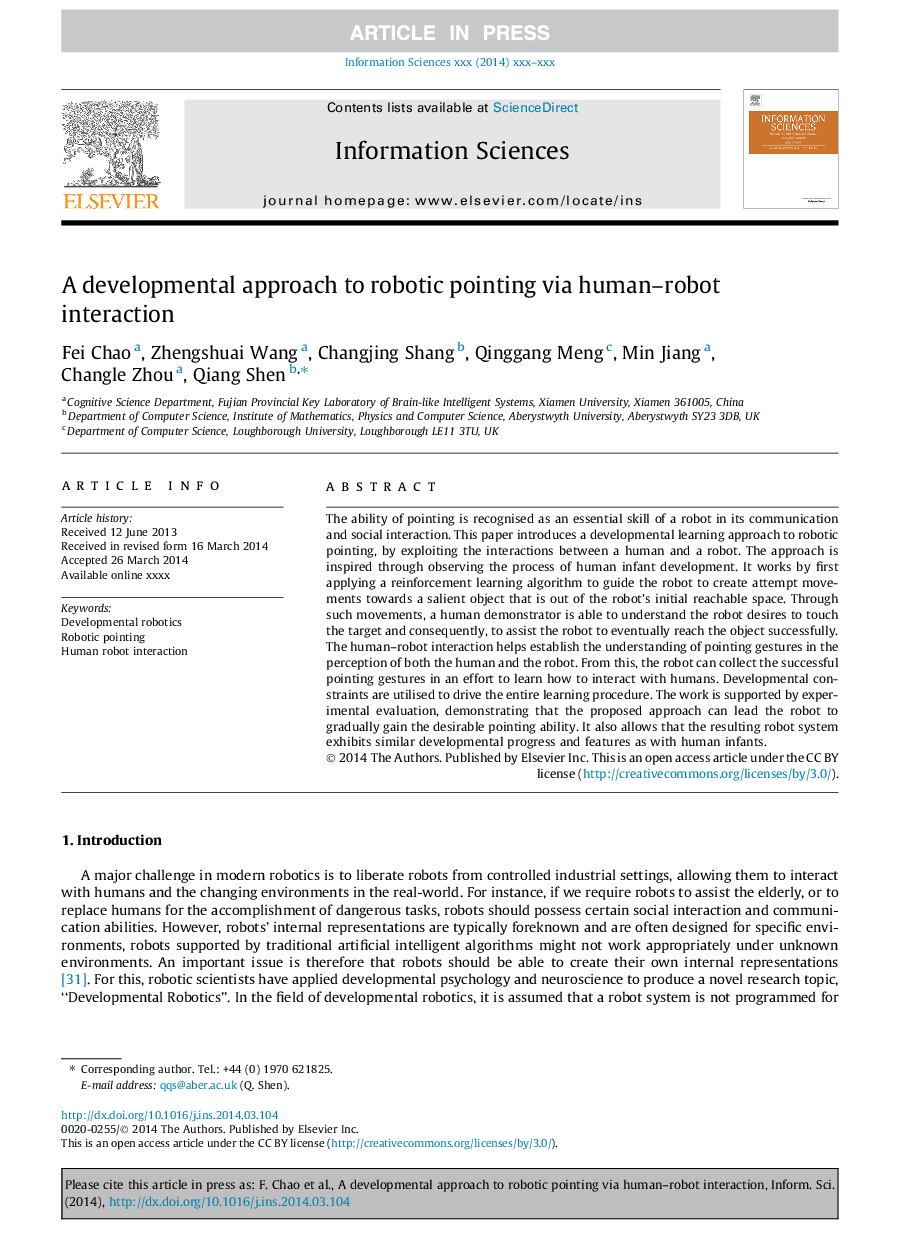| Article ID | Journal | Published Year | Pages | File Type |
|---|---|---|---|---|
| 6857720 | Information Sciences | 2014 | 16 Pages |
Abstract
The ability of pointing is recognised as an essential skill of a robot in its communication and social interaction. This paper introduces a developmental learning approach to robotic pointing, by exploiting the interactions between a human and a robot. The approach is inspired through observing the process of human infant development. It works by first applying a reinforcement learning algorithm to guide the robot to create attempt movements towards a salient object that is out of the robot's initial reachable space. Through such movements, a human demonstrator is able to understand the robot desires to touch the target and consequently, to assist the robot to eventually reach the object successfully. The human-robot interaction helps establish the understanding of pointing gestures in the perception of both the human and the robot. From this, the robot can collect the successful pointing gestures in an effort to learn how to interact with humans. Developmental constraints are utilised to drive the entire learning procedure. The work is supported by experimental evaluation, demonstrating that the proposed approach can lead the robot to gradually gain the desirable pointing ability. It also allows that the resulting robot system exhibits similar developmental progress and features as with human infants.
Related Topics
Physical Sciences and Engineering
Computer Science
Artificial Intelligence
Authors
Fei Chao, Zhengshuai Wang, Changjing Shang, Qinggang Meng, Min Jiang, Changle Zhou, Qiang Shen,
